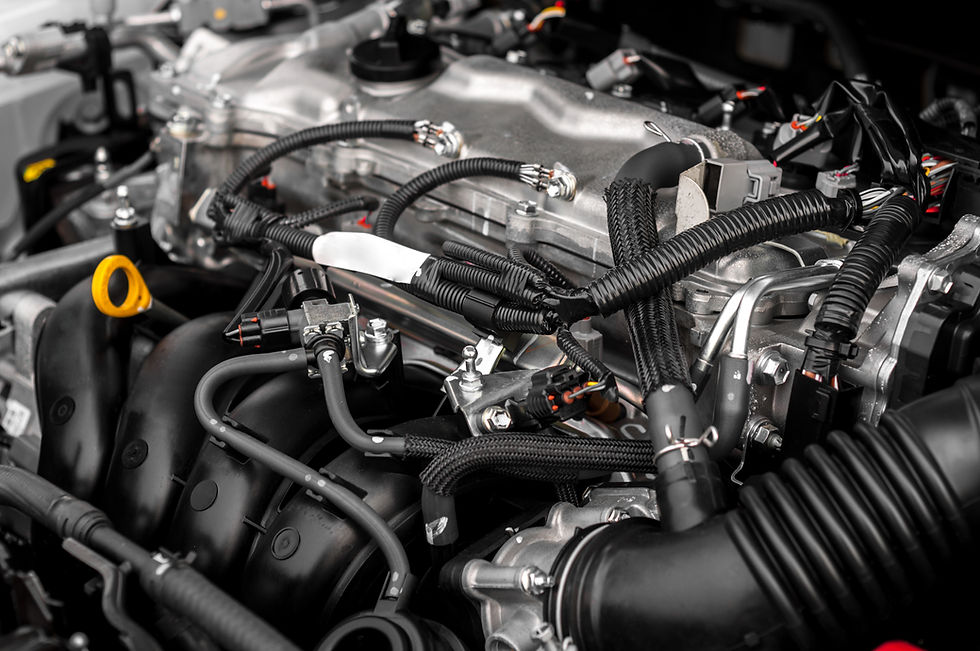
Quick Tips On Maintenance
1. Spark Plugs
Spark plugs ignite the fuel mixture in the engine, providing the power to make your car go. Sitting atop your engine’s cylinder head, it receives a spark from the electronic ignition in modern vehicles or the distributor cap and rotor found in older cars. Eventually, conventional spark plugs will wear out at around 30,000 miles to as high as 40,000 miles, which could cause stalling, starting problems, and engine misfires. Higher-cost platinum-tipped spark plugs may not need to be replaced as often. At the same time, replacing your oxygen sensor, spark plug wires, PCV valve, and fuel filter might be appropriate.
2. Oil Change
One of the main components of a tune-up, an oil change, is the equivalent of a blood transfusion for your engine. Due to its long life and the ability to combat high heat and thermal breakdown, synthetic motor oils can go approximately 10,000 miles or 12 months between oil changes. An exception would be if you regularly operate your vehicle in dusty, dry regions, in which case we recommend an oil change every 5,000 miles or six months for vehicles 2016 and older. Today’s newer-tech engines often use synthetic-blend or full synthetic oil and are engineered to go anywhere from 7,500 to 15,000 miles between oil changes. Check your vehicle’s owner’s manual for the oil change interval to know for sure.
3. Filter Replacements
Filters help protect your engine and vehicle from ingesting dust and other particles, either fluid or airborne, from inside your engine.
Air filters are your first defense in keeping dust and debris out of your engine.
Oil filters help to trap metal particles or other contaminants from entering and circulating through your engine, which could cause premature wear.
Fuel filters prevent contaminated fuel lines and tanks, which can cause hesitation when accelerating, rough idling, and even fuel pump failure in extreme situations.
PCV, or positive crankcase ventilation valve, can become clogged by carbon buildup. This can cause the engine to consume more oil and fuel than usual. It’s an easily replaceable device for which installation can be completed in minutes.
4. Belts and Hoses
Belts are vital to the operation of your engine. They are used to operate your air-conditioning system, water pump, alternator, and power steering unit in some older vehicles. Typically lasting between 50,000 and 100,000 miles, they need replacement when they squeal or chirp.
Other indications include cracks and wear or power steering failure. Timing belts, which drive oil and water pumps in modern vehicles, typically last around 100,000 miles. Hoses help to circulate coolant through the engine and radiator. Swelling, leaking, or bulging hoses are a sign they should be replaced immediately.
5. Windshield Wiper Replacement
Windshield wipers exposed to heat or cold usually squeal if left to do their job too long. Change your windshield wiper blades at the same time you are in for an oil change. It’s a little bit of money to spend for a whole lot of peace of mind.
6. Fluids
Each has a particular lifespan, whether engine coolant, brake fluid, transmission fluid, motor oil, or power steering fluid. Check your owner’s manual for more information, or consult your dealership’s service advisor.
7. Checks and Balances
Consider that while your car is in for service, it’s also a great time for the technician to test your battery. A brake test is also appropriate. A technician can inspect and, if necessary, replace your brake pads and rotors if they have worn into the “danger zone.” A little bit of preventive maintenance goes a very long way.
8. Tires Check
Have your tires gone prematurely bald? That could be a sign that they are out of alignment, out of balance, in need of rotation, or all of the above. While not exactly part of a typical tune-up, there’s never been a better time to have these issues addressed than while in for regular service.
Most auto dealership service departments now sell tires alongside their other parts, often at competitive prices with local tire retailers and big-box stores. Many can get specific specialty tires, even if you did not buy your vehicle from a particular dealership.
9. Tire Balancing and Rotation
Tire balancing ensures a smooth, vibration-free ride after they have been mounted on your wheels, with the bonus of extending their life. After they have been in one position on your vehicle for a specific interval, it is a good idea to move them to a different position, following instructions from your owner’s manual. By doing so, your tires should wear evenly regardless of their positions on your vehicle.